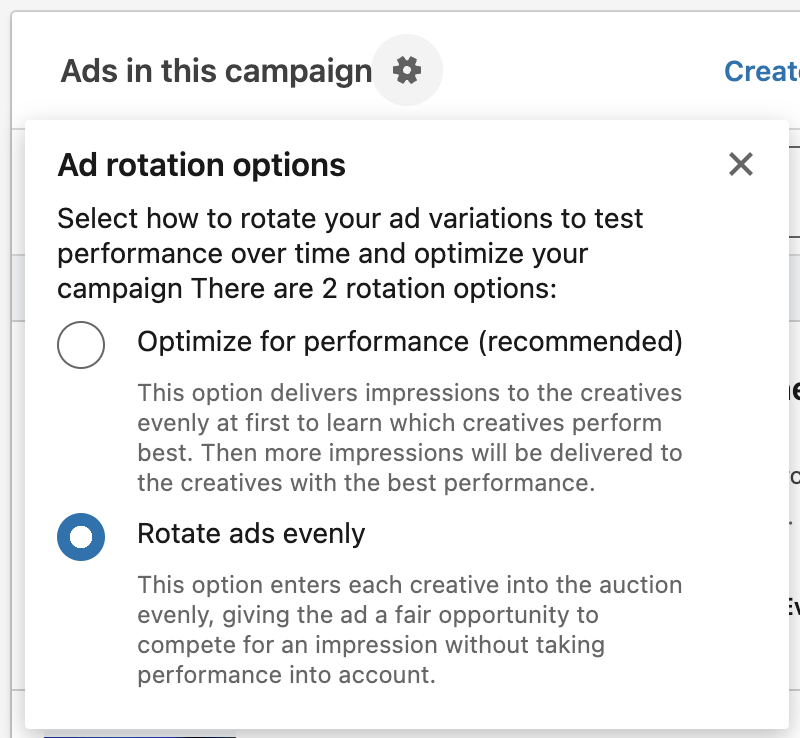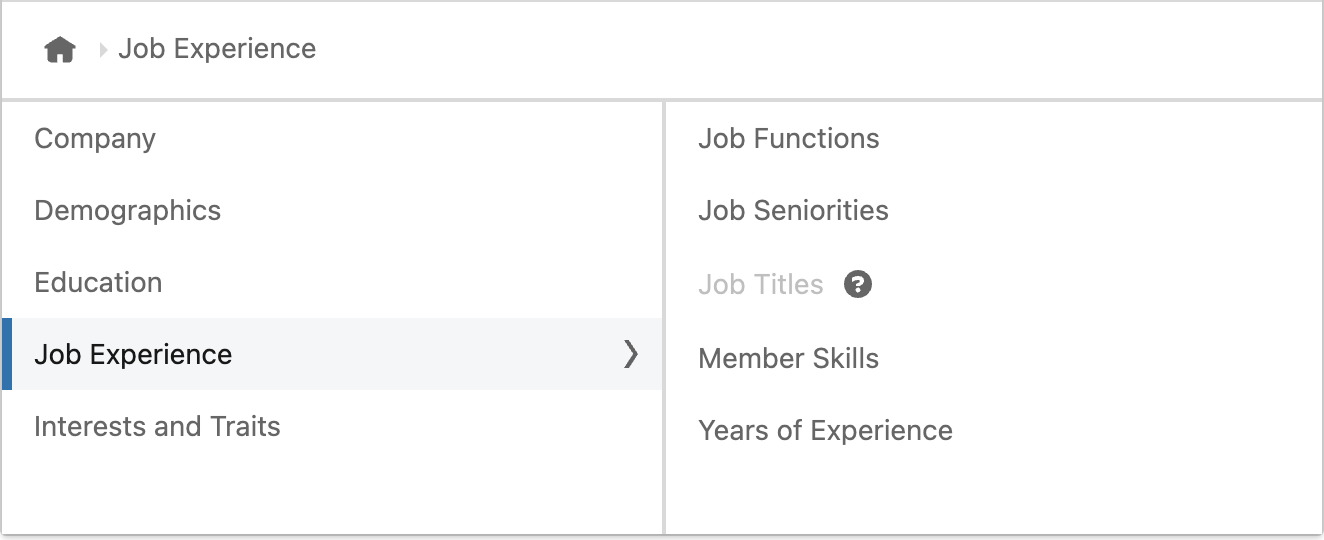Table of Contents
With its robust targeting abilities, LinkedIn has become a linchpin for marketers in the B2B space. We’ve been using LinkedIn’s potential for our B2B PPC clients extensively. In fact, in 2022, we channeled over $3M into LinkedIn ad campaigns, gathering a wealth of practical insights in the process.
This article will take you on a guided tour through our top LinkedIn ad tips and best practices, all specifically tailored to LinkedIn and derived from our real-world experiences. Read on to unlock the full potential of LinkedIn ads for your B2B marketing success.
Related Articles:
1. Embrace Lead Gen LinkedIn Ads
Lead gen ads on LinkedIn have proven to be a cornerstone of our strategy. These ads provide pre-filled lead forms, making the process of submitting contact information a breeze for users. A key point to remember with lead gen ads is the absence of a full landing page to convince someone to provide their information. Therefore, your ad and lead form should effectively communicate the benefits to the user. Craft your lead form language to be persuasive, clear, and above all, optimized for engagement.

2. Choose Manual Bidding to Keep Costs Low
In the world of automated bidding, choosing the Manual bid strategy on LinkedIn might seem counter-intuitive. However, our experience and discussions with LinkedIn representatives confirm that an automated bid strategy often leads to an increase in cost-per-click (CPC) over time. When this happens, duplicating your campaign and launching a new version with a Manual bid strategy can be a highly effective solution. Finding the right bid amount manually might require some trial and error in the initial weeks, but the results are often lower, more sustainable CPCs. We’ve seen about a 17% decrease in CPCs for our clients.
3. Stick to One Audience Per Campaign
To understand the performance of your campaigns and identify areas for improvement, it’s crucial to stick to one audience per campaign. Let’s say, for instance, you’re aiming to target a certain job title and a retargeting list as distinct audiences with your ads. We’ve found it’s really beneficial to target those audiences separately in two different campaigns. While platforms like Google Ads will break down performance metrics by your targeted audience, LinkedIn’s dashboard doesn’t provide the same granular information to evaluate each audience’s performance. Segregating audiences into separate campaigns allows for more accurate performance assessment and targeted improvements.
4. Target Larger LinkedIn Ads Audiences for Better Performance
While targeted segmentation is crucial, larger audiences tend to perform better on LinkedIn. We’ve found that if your audience size dips below 5,000-10,000 users, performance may take a hit. It’s essential to strike a balance between audience segmentation and size for optimal campaign performance.
5. Use ‘Rotate Evenly’ Ad Setting for Effective A/B Testing
A/B testing is a staple of successful ad campaigns, and LinkedIn ad creative is no exception. From headlines to intro text to images and ad types, there are endless opportunities to run A/B tests. However, when you do this, ensure you’re using the ‘rotate ads evenly’ ad setting. If you don’t, LinkedIn tends to immediately pick a winner and may not display your other ads sufficiently for fair testing. To find this setting, you’ll go to the Ads page within your campaign and click the settings symbol.
6. Don’t Forget to Add Exclusions To LinkedIn Ads
Even if your targeting is razor-sharp and Audience Expansion is not enabled, some users outside your intended audience might appear in demographic reports.
For example, let’s say you want to specifically target companies with more than 500 employees. You’ll add a target for the company sizes over that number. But if it’s critical that you don’t spend ad dollars on companies smaller than 500 employees, then you should also add an exclusion for those company sizes as well.
While it may not be scalable to exclude every single audience segment that falls outside your target, doing this for the most critical audience aspects is a good idea. Regularly reviewing demographic reports can help identify and exclude any irrelevant audience segments, improving campaign performance and ROI.
7. Go for Job Function and Member Skills Over Job Titles
While it may seem intuitive to target based on Job Titles, Job Function and Member Skills often yield better results due to the sheer size of these audiences. Combining Job Function and Member Skills with Job Seniorities ensures you’re reaching the right levels within your target audience.
Member Skills are based on the Skills and Endorsements section of the user profile, along with skills mentioned in their profile text or simply inferred from their profile. Job Function is based on tasks or activities common for the user’s job position. You can see how much more broad these criteria are compared with guessing each specific Job Title that you might want to reach. We’ve found these targeting methods to draw in the same demographics, just in larger numbers with Job Functions and Member Skills.
8. Go Beyond Website Retargeting
LinkedIn offers great options for retargeting audiences outside of just website visits. You can build a list of users who engaged with your single image ad, opened or submitted your lead form, viewed a video ad and more. We love using this for our clients as an easy way to identify users who engage with ad content and target them with a specific message relevant to the action they took. It’s a convenient way to stay top-of-mind with engaged prospects.
9. Use Square Images for Versatility
When it comes to image ads, going square (1080×1080) can ensure your ads look great on both desktop and mobile. This ad size provides more real estate than horizontal ads and more versatility than a mobile-only vertical ad size. Using square images allows for a streamlined set of ads that you know will reach your target audience, regardless of the device they’re using.
10. Craft Winning LinkedIn Ads
Lastly, crafting the perfect ad copy and imagery is crucial. Incorporate compelling stats into your ad copy – LinkedIn found a 37% increase in click-through rate (CTR) by doing this. Incorporating images of people into ads has also been found to increase CTR by an impressive 160%. Always include a Call To Action (CTA) button on the image. Remember, LinkedIn’s CTA options may not always perfectly align with your specific needs, so it’s critical to incorporate your own CTA directly onto the image. Keep your messaging concise and clear to set your ad apart from the noise of the LinkedIn feed.
LinkedIn advertising, when used effectively, can be a potent tool in your marketing arsenal. Remember, like all paid social media strategies, constant testing, learning, and optimization are key. Here’s to harnessing the power of LinkedIn with these tips to elevate your brand’s visibility and growth!
Search News Straight To Your Inbox
*Required
Join thousands of marketers to get the best search news in under 5 minutes. Get resources, tips and more with The Splash newsletter:


